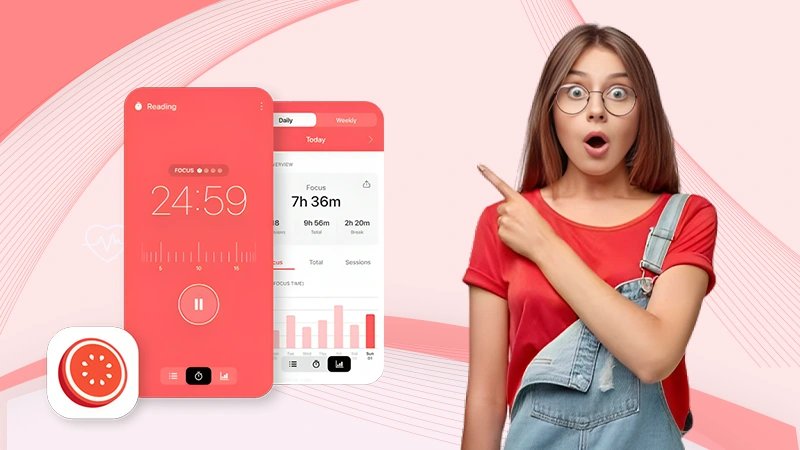Do not worry if you can’t distinguish between digital design and graphic design. Many people, both outside and within the industry, cannot define these terms and draw a clear line between them. This confusion originates from their apparent similarity. Both digital and graphic design pursue similar goals and involve creative thinking and artistic skills. However, if you are considering a career in this field or need UI and UX design services for your project, there are some important nuances to be aware of.
Defining the Terms
Let’s begin by clearly defining each term, as definitions provide important hints about the similarities and differences between digital and graphic design. Digital design is defined as the use of digital tools (e.g., design software) to create images, animations, interactive pages, 2D and 3D models, etc. These become part of websites, mobile apps, online ads, and other online content. Among other things, graphic designers develop the following elements:
- Banner ads for websites
- UX wireframes
- Infographics
- Website elements (e.g., starting page animation)
- Graphics for reports, newspaper articles, white papers, etc.
In turn, the term ‘graphic design’ refers to the art of using visual tools for communicating specific messages. For example, designers can use images and typography to create brand logos that users will be able to recognize. The practical application of graphic design in business is diverse. It is used to promote products, communicate complex information in a simple form, develop a company’s identity, etc. Similar to digital designers, graphic artists can work with different media, such as:
- Book covers and illustrations
- Product labels
- Companies’ logos
- Software interfaces
- Website pages
- Posters and iconography
As you can see, the range of graphic design use is huge, including print and digital design.
The provided definitions allow positioning digital design as a subset of the graphic one, which focuses on digital media. While this division is justified, it is more common today to perceive digital and graphic design as two separate areas. Given the differences in practice, work tools, job duties, etc., this position is reasonable. Do you feel even more confused now? The following sections explain how the two areas of design are applied and what tools they use.
Similarities
The two types of design overlap in some areas, and creative thinking is one of them. Both digital and graphic artists use their creative skills and vision to communicate information and ideas through visual forms. In both instances, these professionals seek to make sure that the visual products they create are aesthetically appealing, relevant, understandable, and easy to remember and recognize. These principles apply equally to websites, logos, ads, etc.
Another similarity lies in the freedom to make creative choices and own the products of one’s work. Both graphic and digital artists often have clear instructions from clients about the product. It means they work within certain creative limits. After the work is complete, the client gains full control of how it’s used.
Sometimes, digital and graphic designers use the same tools in their work. These may include animation, software (e.g., Photoshop), Pantone colors, etc. However, this is where similarities end and differences begin.
Differences
Graphic and digital design differ in four main areas. These include tools, the use of analytics, interaction vs. statics, and spheres of application.
Tools
Digital designers cannot exist without digital tools, such as computers, software, 3D modeling programs, etc. They work for digital and with digital in mind. To compare, graphic designers can easily complete the task with a pencil and a piece of paper at their disposal.
Moreover, professionals working in digital design often need to know the code to work in the UI and UX design fields. They are trained in using different languages, including JavaScript, HTML5, and CSS3. While graphic designers can have the same skills, these are a rather useful addition to their work than an absolute necessity.
Application of Analytics
Next, digital designers can use statistics to adjust their practices. They track viewing stats, clicks, likes, and other data types to know how customers respond to their products. Graphic designers have no such data at hand, as it is practically impossible to measure systematically and objectively how people respond to print design. Thus, graphic designers rely more on their intuition, clients’ wishes, and some general understanding of the target audience.
Interactive vs. Static
Digital designers create products that should be visually pleasing and easy to interact with. In contrast, graphic designers focus on aesthetics more. For instance, digital designers working in UI/UX design are expected to create websites that look and feel right. Their task is to ensure that users can interact with the product without interruptions in all settings. Thus, functionality is as important as creativity for digital artists.
Sphere of Application
One of the major differences to keep in mind relates to the application sphere of design products. Digital designers create things that end up on screens of computers, smartphones, and other digital devices. In contrast, the products of graphic designers’ work are mostly used in print:
- Leaflets
- Catalogs
- Books and print newspapers
- Advertisements
- Companies’ logos
Still, it’s a mistake to think that graphic design does not work in the digital sphere. Graphic designers can develop creative visual content for websites, apps, and software. At the same time, they mostly deal with creative solutions and big-picture exploration.
Final Remarks
The art of graphic design is more than 100-year-old. So far, it has managed to adjust to the technical changes such as the emergence of computers, TV, Internet, etc. It may seem like graphic design will soon become a relic of the past. With companies going digital, the role of digital designers has increased considerably. However, while these professionals are certainly in great demand, graphic design will not disappear anytime soon. We are still surrounded by graphic designers’ work products, such as ads, brochures, books, magazines, etc.
At the same time, the overlap between digital and graphic creative processes may become more pronounced as many graphic designers increasingly use digital tools in their projects. Thus, the two design areas enrich each other, allowing artists to come up with innovative design solutions.
















